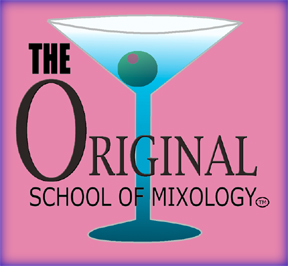CORDIALS
Cordials are obtained by mixing or redistilling neutral spirits, brandy, gin, or other distilled spirits with or over fruits, flowers, plants (or pure juices from these ingredients), other natural flavoring materials or with extracts derived from such materials.
Cordials and liqueurs are synonymous terms, according to the Federal code. But no matter which is applied, Uncle Sam is definite that cordials contain a minimum of 2 1/2% by weight of the finished product, sugar or dextrose, or a combination. Cordials come to the American home from a mystical past that conjures visions of mystic monks and alchemists searching for an elixir of life. Cordials are produced today wherever distilled spirits are produced. The countries which produce the best known, most sought after cordials happen to be France and Italy. These two countries produce such highly requested (and secret) preparations as Chartreuse, Benedictine, Galliano, Strega and Gran Mariner. Three basic methods of production are used. These are percolation, maceration, and distillation. One or a combination of these may be used. There are many varying flavors. Based on the type of flavor, cordials can be grouped into five broad divisions. These include fruits, seeds, herbs, peels and cremes.
WINE
Almost every European nation has a saying equivalent to "a meal without wine is like a day without sunshine".Wine has been one of mans favorite beverages and it is not improbable that the beverage is older than man himself. For the first wild grape, ripening and basking in the suns warmth and in unison with airborne yeast, turned into wine without mans help. With all wines the foundation for quality is laid in the vineyard. Care of the vines, care in picking, and care in selecting only such grapes that have reached just the right balance of maturity, are all important in the making of good wine. Wine is a natural product and it comes along way on the vine itself. As the sun ripens the grape, natural grape sugar is created. as in the case with most table wines the grapes are picked when the natural sugar content has reached 22 percent. Fermentation picks up and merely continues a process that began with the neutral ripening of the grape on the vine. Sunlight turned the fruit acid, or the grape to sugar, fermentation turns the natural grape sugar (or part of it to alcohol, thus giving the finished wine its natural alcoholic content.
VERMOUTH
Vermouth has its beginning as a simple white wine. The base wine is usually muscatel, sauteme, white port or even a mild sherry. Aside from being of good quality, a neutral type of wine is usually sought by Vermouth makers. Strangely flavored wines are added to its base wine. These flavored wines are prepared from a formula of herbs and spices, containing often as many as forty or fifty different variations. The herbs are steeped in heated wine and allowed to remain in the wine for a period of several months. After the steeping period, the wine is drawn off into an extract tank, more heated wine is added to the herbs and they are steeped this time for about a day. The second wine is then drawn into the extract tank to blend with the first wine. Finally the highly flavored wine extract is added to the base wine, in the proportions called for the brand formula and the Vermouth is drawn off into vats to age.
